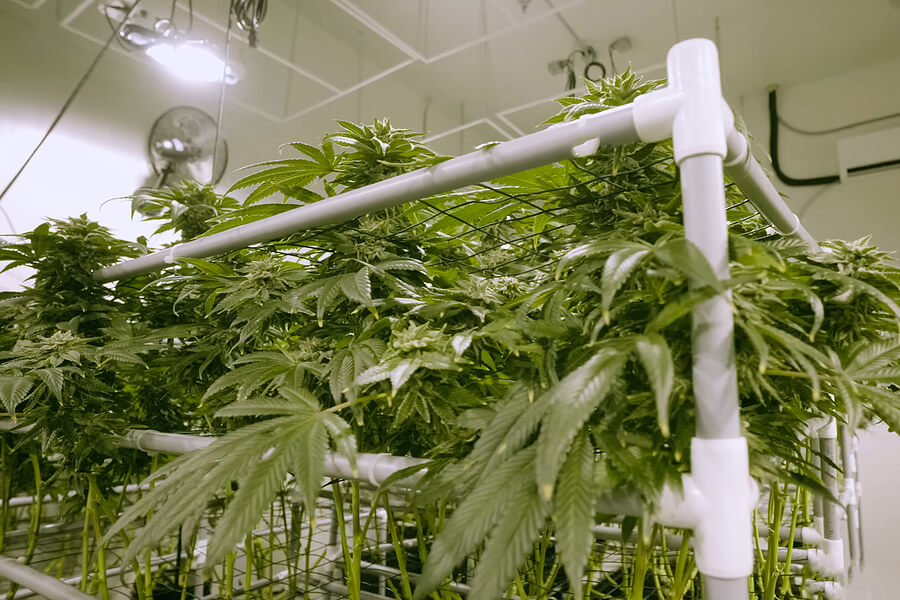Just like with any other undertakings, starting in the cannabis industry demands one thing along with the other elements to consider: ambition. If you are ready to allocate most of your time to growing marijuana commercially, you have to be skillful and knowledgeable in its background and happenings, data, and the transitional political climate to ensure success.
History of Marijuana Industry
The industry of marijuana is rapidly changing, which means that information that is significant to the sales data of today, legal stipulations, and best applications may turn quickly insignificant tomorrow. Comprehensive research and evolution efforts are necessary for any kind of industry. However, the range to which the alterations in the world of cannabis are happening needs a more precise eye to industry reports and current news.
Establishing a Marijuana Business Plan
Establishing a marijuana business plan is a bit unique from a conventional initiative or business. Other than the common difficulties such as competing research, financing, operations, marketing, and framework of ownership, you will have to comprehensively study the specific marijuana regulations of the state and make sure that your business will not run erroneously of restrictions imposed on cultivators by these new regulations.
It is suggested that you conduct marijuana consulting firms in the local, or reach out to the marijuana governing agency of the state to tackle the governing regulations. Moreover, marijuana producers must put into consideration the following aspects:
- Security and traceability
- Compliance standards
- Employee training
- Taking out of waste products
- Transport and logistics for distribution, packaging, and handling
- Testing competence and protocols
- Precise illustration of the facility, business planning, and process of production, including fertilizers, soil, and equipment to be used.
Finding a Grow Facility and Establishing Your Commercial Growing
Deciding to invest in a facility for marijuana production over a trade storefront turns to get things simpler when starting the operation – potential producers can make use of more inaccessible, distant venues with bigger advantages to logistics, security, and the upcoming expansions. There are limitations under the current laws of the state that influence producers from founding grow sites far from libraries, public schools, arcades, transit centers, or parks that accommodate minors.
Outdoor Growing Sites
In some states, marijuana production sites should be set up in an open, large space confined by a physical barrier. Other states are prohibiting the producers from growing marijuana outside of a protected, confined location.
Some rural places with agricultural experiences have seen marijuana to be a cash crop that is easy to nurture and financially advantageous. Since the roots of marijuana can broaden aggressively, outdoor cultivators can get a much abundant harvest by letting their plants grow up to 10 feet or even higher, unrestricted by fabricated ceilings or lighting. Marijuana can make a superior cover crop, letting enough space on the top for small-sized crops such as lettuce, carrots, tomatoes to thrive with an additional layer of protection on top.
If the climate and the restrictions of the state permit the outdoor production of marijuana, you will get a product that can only be attained through the guidance of Mother Nature. However, just like any farmer will impart to you, their sustenance relies on her hand. Just as vulnerable to pests, hash weather, and scarcity as any other kinds of cash crops, marijuana is a capricious plant and a productive one.
In such a changeable and prospering market, early aspirants into the marijuana industry must opt caution when identifying whether they like to invest in a regulated indoor production site or a more delicate attempt outdoors.
Indoor Growing Sites
Indoor marijuana grows sites should be in a confined and protected facility with working doors, windows, solid or semi-solid walls, and roof.
Operating victorious commercial marijuana grow is quite a costly challenge. Although cultivators can keep up a greater level of control in humidity, light, and pests in indoor settings, keeping up the proper levels of light and keeping efficiency in energy as much as possible are given the most importance when growing marijuana commercially.
Space, Framework, and Soil in Growing Marijuana
Whether you are a veteran marijuana grower or a beginner, you should secure one thing more than anything else: space. You can cultivate a small number of plants in a 5 by 10 inches grow tent. However, those searching to create a dash in the industry of marijuana must think about skillful marijuana grow sites to guarantee top-rated products and constancy in production.
The most significant consideration when assessing an able grow space is guaranteeing good ventilation for the plants. Marijuana plants need plenty of light, which commonly diffuse an overwhelming quantity of heat. Without good ventilation and exchange of air, producers are taking the chance of cooking their plants or restricting yields because of too much heat, humidity, or oxygen.
HVAC systems specifically for greenhouses occur for confined greenhouse designs and assist producers in planning out hyper-systematic climate control systems to guarantee the site keeps up the good growth conditions.
When it comes to potting each plant, use at least a 5-gallon pot for every marijuana plant. Its roots immediately expand and demand plenty of room. Hence, smaller containers can only produce smaller yields. Other options are grow-bags, putting them on a penetrable table with tarps or trays to accumulate the surplus water.
If you have to carefully select any bearing of marijuana to grow more than others, you should give it to the soil. The medium of growth is an important element of cultivating any plant; however, the quality of soil can create an amazing distinction in the output of the end flower. You will also like to cautiously supervise the pH levels of the soil, since marijuana plants like pH environments of 5.5 to 6.5.
Although some sharp cultivators are shifting to penetrable concrete to assist an unrefined water recycling, it is an acceptable idea to use plastic or wooden pallets, grated platforms to serve as the floor of the grow tent to assist with excess or gather for recycling.
Lighting and Electrical
Electricity expenses are the number one costs encountered by the producers. It commonly equates or surpasses accumulated lease costs for every month during the period of production.
Simulated lighting, air conditioning, ventilation, dehumidification, and irrigation control systems all need a huge volume of electricity, directing some cultivators to examine energy-efficiency selections.
Selecting and Urging Marijuana Products
There are lots of methods to acquire superior-quality marijuana seeds legally. However, you will want to cautiously ponder what strains to choose and how the products can compare with what is already offered in the market.
When It comes to the bestselling strains, there is no specific data to tackle it; however, since many marijuana seeds are obtained from the Netherlands, it is not hard to get information about the most prominent strains.
Seeds or Clones in Growing Marijuana?
There are unique advantages when deciding any of the formats to start your growing marijuana commercially. However, whether you choose to use marijuana seeds or clones, you should cautiously examine both the origin and quality.
Seeds permit a full cultivator control in the entire cycle of growth; however, the process demands a longer time. Acquiring clones can hasten the process; however, the plants and leaves become vulnerable to mold, shock, or disease if replanting is needed.
There are three kinds of marijuana seeds you can buy: regular seeds, feminized seeds, and auto-flower seeds.
Regular seeds are more affordable and reliable. However, you should know that half of the plant will be male and hence, will not flower.
Feminized seeds are mostly chosen in recreational marijuana businesses because the plants only produce females. Female seeds are quite taller than the other two kinds of seeds; however, the edge is best recognized in the ability of the producer to only bear females and prevent time-wastes cultivating male plants.
Auto-flower seeds, on the other hand, start to flower on their own. They do not require any adjustments on light cycles. These plants are likely to be smaller, but they produce yields that are tantamount to the regular and feminized seeds/
The first thing to consider when getting a clone for growing marijuana is to guarantee the plant meant for cloning was acquired from a female.
Conclusion
Growing marijuana commercially has been a common undertaking. A lot of cannabis enthusiasts are considering this business as they have witnessed the potential of growing marijuana in generating profits.
What is good about growing marijuana commercially is that it is not restricted to the veterans. Even the beginners can take the call and take the challenge. As long as you learn about the basics of the cannabis industry, and you are willing to follow the guides indicated above, you should find your way to the success of marijuana cultivation. With great determination and commitment, you will soon see yourself prospering in your business. Enjoy the venture, and do not be weakened should you experience difficulties. Remember that any business has its struggles.

